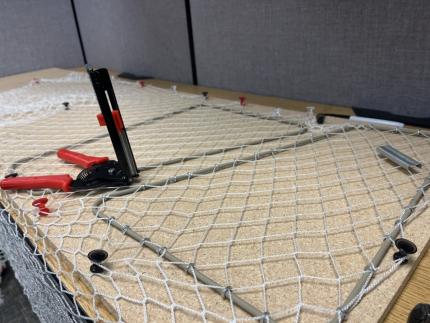
Wildlife Program report: Dec. 16-31, 2023
Managing Wildlife Populations
Bear Trap Removal: Wildlife Biologist Prince removed a bear trap that was set up over the weekend in an effort to trap an orphaned bear discovered by a local resident. The bear cub was feeding on and bedding underneath a deer carcass outside of Metaline Falls. Unfortunately, the bear was not seen on camera or captured.
Sharp-tailed Grouse: Biologists Lowe and Brinkman attended a planning meeting with staff members that will be involved in translocating sharp-tailed grouse from British Columbia to Washington in the spring.
Grouse and Shrubsteppe Songbird Species Lead Atamian demonstrated the process of attaching netting to sharp-tailed grouse funnels for walk-in traps so that Biologists Lowe and Brinkman can assist with preparing traps for the capture effort in British Columbia.

Providing Conflict Prevention and Education
Spokane Moose: Wildlife Conflict Specialist Harris responded to a report of a cow moose that has been stuck inside a fenced property since Christmas. The property is 50 acres of forested land that is surrounded by 6-foot-tall chain link fencing. Harris and the reporting party attempted to herd the moose towards an open gate without success. The moose appears to be in good health and has adequate access to food and water on the property. Washington Department of Fish and Wildlife staff members will continue to monitor the situation.
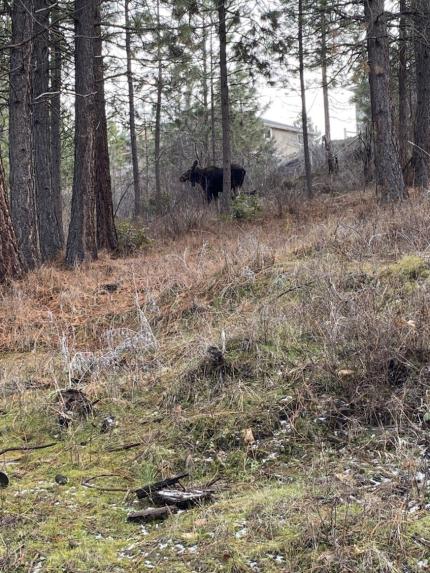
Conserving Natural Landscapes
Timber Management: For a third week in a row, Sherman Creek Wildlife Area Assistant Manager Palmer spent two days at LeClerc Creek Wildlife Area. He used a pole-style brush cutter to remove undesirable lodgepole pines from regrowth areas that had been previously thinned. On Tuesday, he had volunteer help from Access Manager Dziekan, Conflict Specialist Harris, and Private Lands Biologist Baarstad. Wednesday, he was assisted by Washington Department of Fish and Wildlife Research Scientist DeVivo, Lands Agent Stallinga, and Biologist Westacott. Over just two days of work, Palmer and his crews cleaned up 28.5 acres of land. Thanks to all the volunteers who showed up to lend a hand!
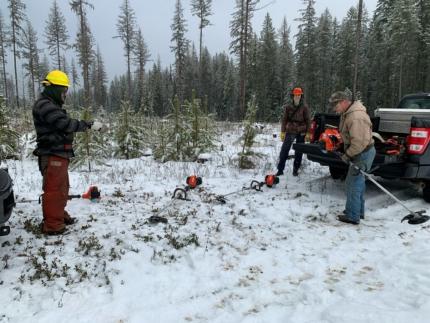
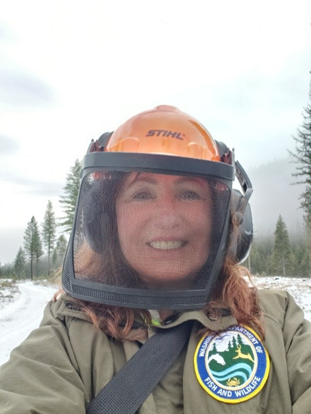
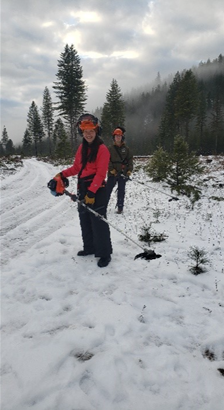
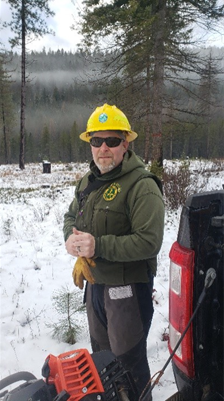

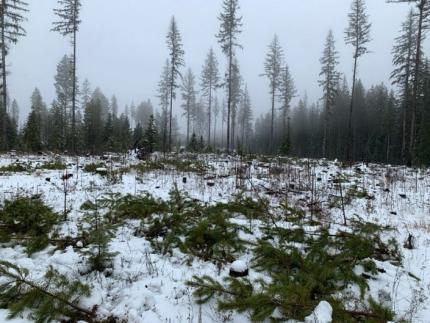
Prescribed Burn Planning: Private Lands Biologist Nizer is in the planning process for a prescribed burn on a property enrolled in the Hunt by Reservation Program. Nizer reached out to Department of Ecology for permits regarding the burn.
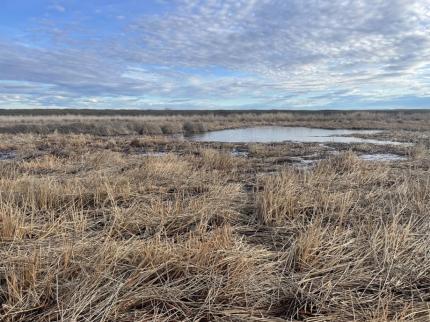
Conducting Business Operations and Policy
New Rock Rake: This week, Wildlife Area Manager Finch and Wildlife Area Assistant Manager Rimmelspacher worked on blading the one-mile entry road coming into the office complex. After the rain the following day, Finch and Rimmelspacher tried out the new rock rake for the first time. The new rock rake did an excellent job on the road, and it may take the place of grading the road at certain times and conditions.
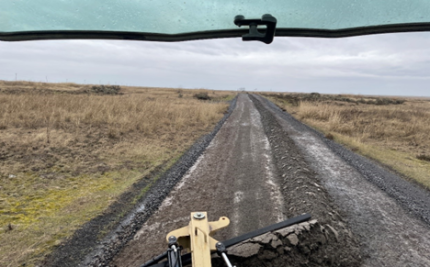
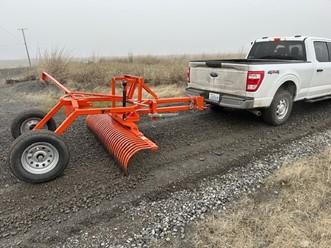
Other
Cultural Resource Survey: Archeologist Davis visited the W.T. Wooten Wildlife Area this week to dig the holes for a cultural resources survey on the site where a new pole building will be built at the Wooten headquarters. Wooten staff members assisted with digging the survey holes. While the archeologist was on site, he dug a couple test holes where the new irrigation well will be drilled to save Capital Asset Management Program staff members from having to come back to the site for an additional survey.
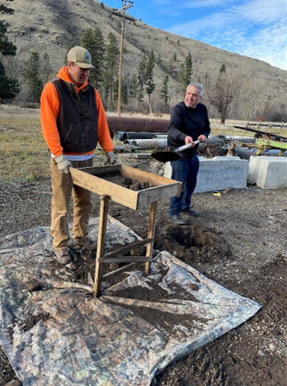
Managing Wildlife Populations
District 6 Lynx Research: Biologist Fitkin assisted the Home Range Wildlife Research crew with the first lynx capture of the season by immobilizing and helping radio-collar a healthy 32-pound male lynx. This was an animal that had eluded capture last season, but a pre-snow trapping effort for this individual specifically proved successful and wrapped up the first season of captures for this 3-year project.
The primary objective of this multi-year project is to see how lynx are using the fire-impacted landscape across a gradient of fire scars of different ages. Results will inform forest and fire management strategies to help maintain adequate lynx habitat in the face of growing wildlife risk. More information on this project and the locally grown Home Range organization can be found here: HOME RANGE. See attached release video.
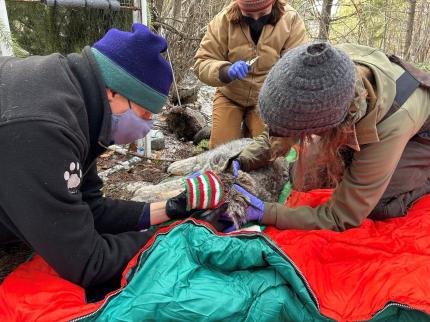
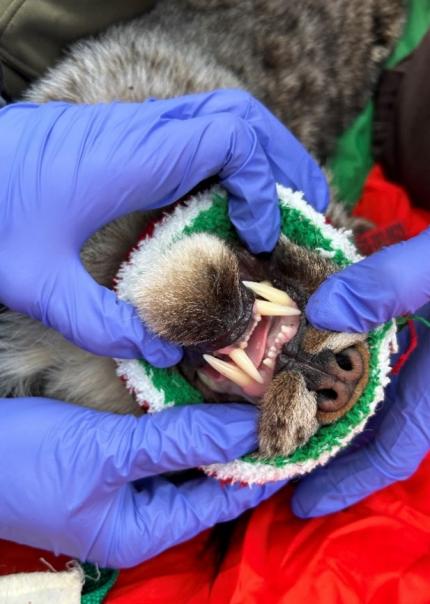
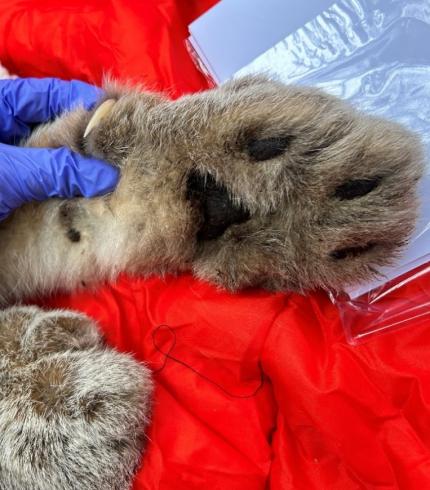
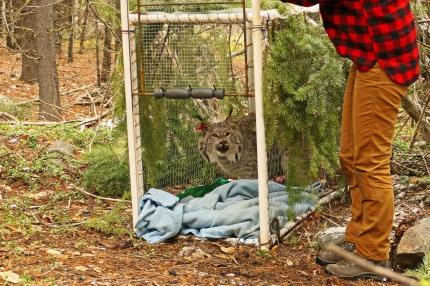
District 6 Fisher Surveys: Biologists Fitkin and Heinlen finished up deploying remote camera survey stations in District 6 as part of the north Cascades fisher monitoring effort. Stations are equipped with a scent dispenser that will operate periodically from fall through late spring when the cameras will be retrieved. Data from this effort will help determine the current distribution and status of fishers throughout the ecosystem following the recent reintroduction efforts. Many thanks to other staff members and partners that made this herculean effort possible.
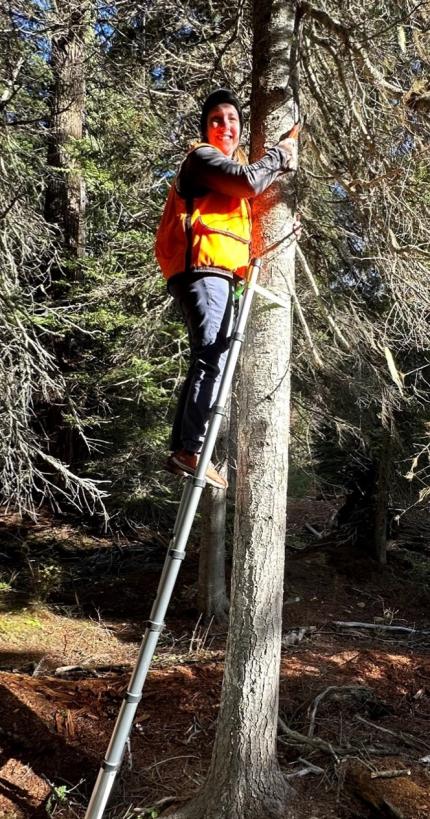
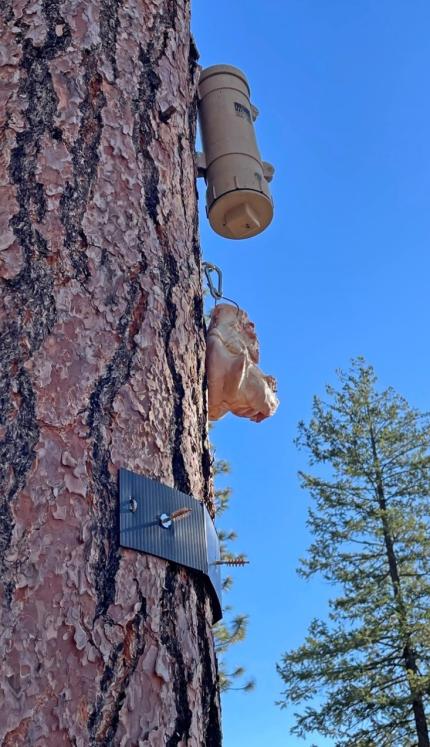
Mule Deer Aerial Surveys: Biologists Jeffreys and Eilers finished a multiday aerial winter range mule deer survey of the Chelan and Wenatchee Mountains subherds. The subherds are part of Washington’s east slope Cascades mule deer population which also extends into Okanogan and Kittitas counties.
Biologists observed over 2,000 deer during the course of these surveys and will use these observations to attempt to generate an abundance estimate for the Chelan and Wenatchee Mountains subherds. Ratio data, including buck to doe and fawn to doe ratios, will also be generated from these aerial observations to assess age and sex composition. Wildlife biologists use these data to inform management decisions and harvest regulations.
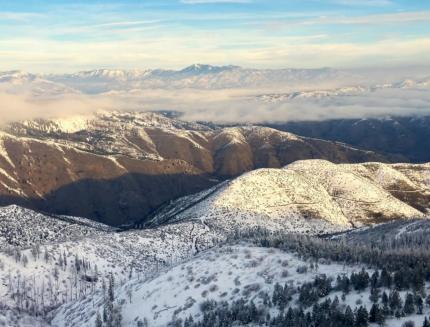
In the case of the Wenatchee Mountains subherd, biologists will compare ratios gathered from these aerial surveys with those collected via images captured by 15 remote cameras placed along migratory routes crossing Highway 97 between Peshastin and Blewett Pass. If the ratios generated from both methods are similar, cameras may be a viable method for determining herd age and sex ratios moving forward. This would be a far more efficient and far less costly alternative to the current method of obtaining these data via aerial surveys. Not only is the helicopter time extremely expensive, but the weather throughout Chelan County during the timeframe in which these surveys must take place makes it very difficult to actually complete the work.
These surveys are timed to fall within the narrow window between the end of hunting seasons and the onset of antler shedding in late December. After antlers are shed it becomes impossible to reliably differentiate between bucks and does. Low-hanging clouds and patchy fog are prevalent this time of year in Chelan County. In clear weather, biologists can reasonably expect to survey ten subunits per day, achieving the goal of 25 to 30 subunits within three days of flying. This ideal scenario virtually never occurs in reality.
The weather this year was so poor that it took eight days just to complete 20 subunits. The majority of local mule deer winter range was obscured by low-hanging clouds throughout the allotted survey window, leaving biologists grounded at the airport for part of each day and a couple of full days.
Biologists Jeffreys and Eilers managed to get solid survey coverage of the Wenatchee Mountains subherd’s winter range in areas such as Number Two Canyon, Horse Lake area, Sage Hills area, and the foothills south of Monitor and Cashmere. North of Highway 2, biologists surveyed the Chelan subherd’s winter range in areas such as Nahahum Canyon, Swakane, Entiat, Mills Canyon, and Navarre Coulee.
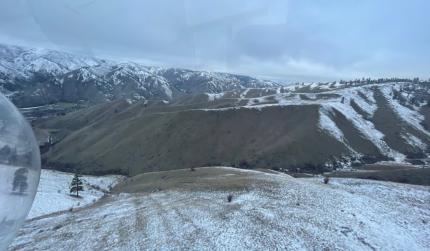
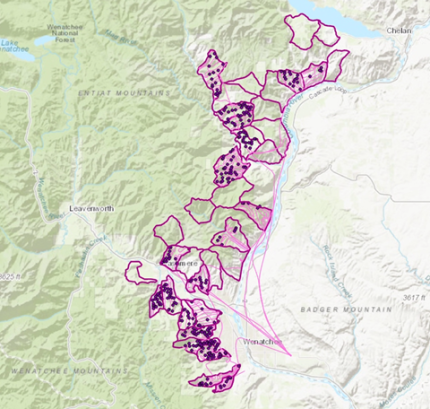
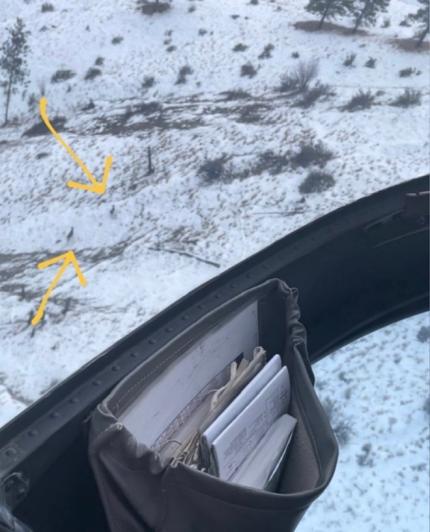
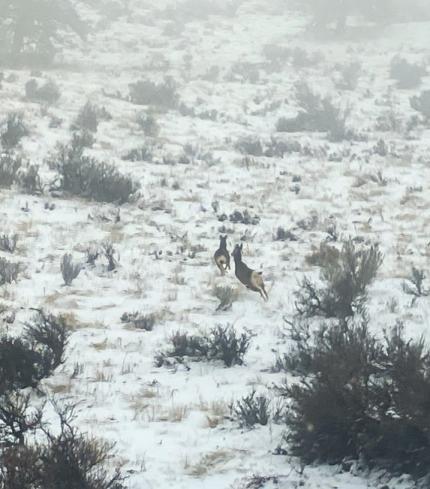
Mule Deer: Early in December, Douglas County Wildlife Area complex staff members assisted with a mule deer survey, identifying deer herds, and estimating herd composition. During this one-day survey, staff observed 254 deer and recorded their location, sex, age, and antler point category.
Mountain Goat Aerial Surveys: Biologists Jeffreys and Eilers attempted to perform a day of mountain goat aerial surveys along the north shore of Lake Chelan. Unfortunately, inclement weather shortened these surveys allowing for the complete coverage of only one survey unit in the Prince Creek area. A total of 11 mountain goats were observed during these surveys, and most were observed very near the approximately 200-foot-thick band of clouds that hovered around 2,000 feet in elevation the entire day across Lake Chelan.

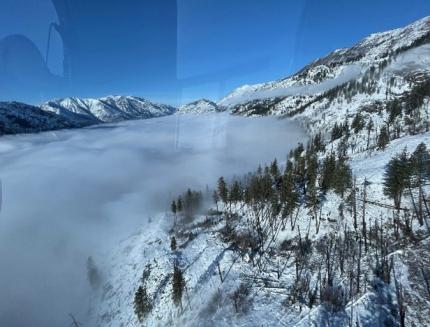
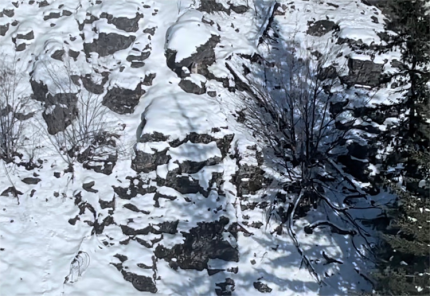
Chelan Audubon Christmas Bird Count: Biologists Eilers and Jeffreys participated in the annual Chelan Christmas Bird Count along with North Central Washington Audubon Society volunteers. This year’s count was coordinated by Assistant Wildlife Area Manager Pavelchek. The Chelan Christmas Bird Count represents the nation’s longest running citizen science project. Every year volunteers all across the United States and in 20 other countries in the western hemisphere gather to identify and count birds in their local communities.
Data collected from the Chelan Christmas Bird Count is used to monitor relative abundance of bird species and assess long-term population trends. Volunteers work alone or as part of a team and they drive and hike around predetermined survey routes or areas. This occurs during a 24-hour period between Dec. 14 and Jan. 5, and they count every single bird observed.
Biologist Jeffreys surveyed an area that included Chelan Gorge and Chelan Butte, while Biologist Eilers surveyed the South Shore of Lake Chelan. Many bird species were observed between these two areas. They spotted all three Washington chickadee species (mountain, black-capped, and chestnut-backed), common loon, golden eagle, bald eagle, and Cooper’s hawk.
One of the most surprising birds encountered was a Lewis’s woodpecker along Chelan Gorge Road. Biologists did not expect to see a Lewis’s woodpecker here in late December because Lewis’s woodpeckers are summer residents in our area, typically arriving to the North Central Cascades in early May and departing by October. To learn more about how you can become involved in the Chelan Christmas Bird Count or another in your area, visit the Audubon website.
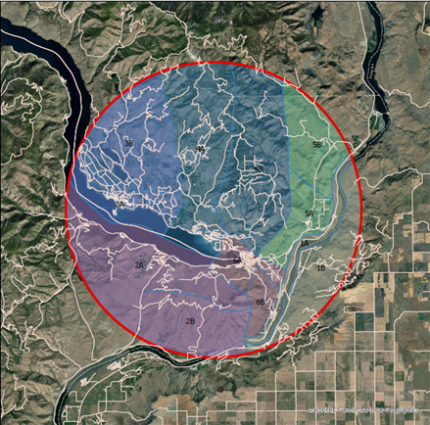
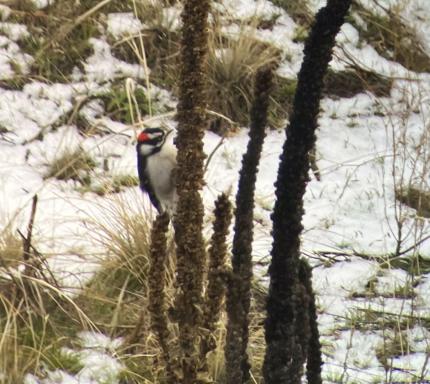
Sharp-tailed Grouse: Douglas County Wildlife Area complex staff members have been coordinating with district biologists, research biologists, and the Diversity Program in an effort to capture sharp-tailed grouse at lek sites in the Big Bend Wildlife Area. They placed traps and game cameras in November. Staff members have routinely monitored the game cameras and replenished the corn that is used as bait.
Sharp-tailed grouse have been detected by the cameras. Unfortunately, as observed in early December, there are not enough showing up consistently to trap. The bait that staff members placed in the traps was covered by snow, which might account for the significant decrease in detections this last round. Hopefully, once snow covers the ground again in mid-December, more grouse will be returning to the leks. Staff members hope to trap them and affix a GPS collar to captured birds to gain knowledge on seasonal habitat use.
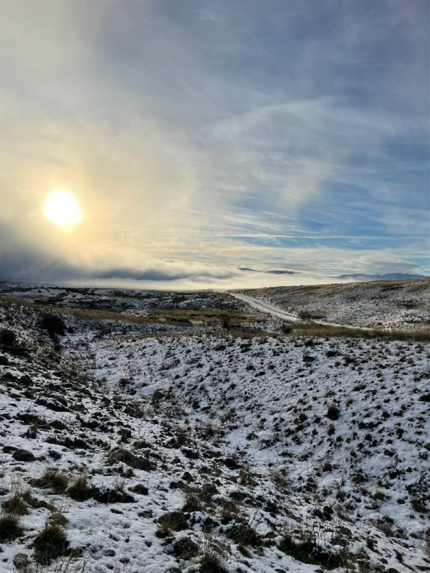
Providing Recreation Opportunities
Feeding stations: Staff members have been tending to feeding stations that span across the Wells Wildlife Area and Sagebrush Flats units near Brewster. These stations are filled with wheat seed for upland game birds such as quail, pheasants, chukar, and sharp tailed grouse as well as some species of migratory birds. This year the feeding stations received a revamping. They now have lids and gates to keep animals out of the seed buckets. These new gates and lids allow buckets to be filled with seed preemptively in early December so they can be opened when hunting season ends. Wheat that is left over from this project is kept on site and available to the public.
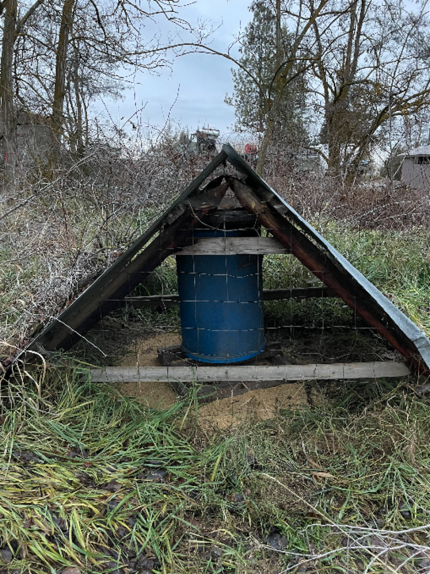
Other
Winter Maintenance: After completing a rather rigorous seeding project in November, this month wildlife area staff members have been tackling various projects to prepare for the winter. These tasks include repairing and maintaining equipment that was used heavily in the fall, as well as winterizing vehicles and spray tanks.
Lands Division Workshop: There was a Lands Division Workshop in Ellensburg where Douglas County Wildlife Area staff members were able to put faces to names and attend lectures on lands related topics. Many attendees were particularly interested in hearing about the projects going on in other districts that differ greatly from their own.
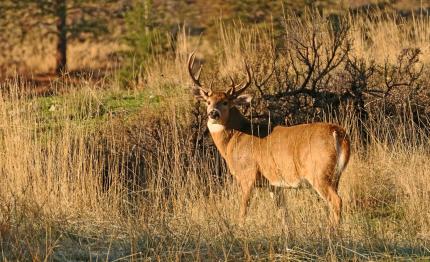
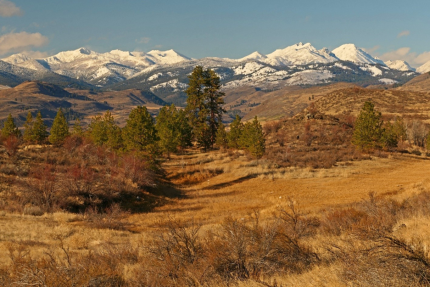
Managing Wildlife Populations
Oak Creek Wildlife Area Cowiche Unit: Winter feeding operations commence on the Cowiche Unit of the Oak Creek Wildlife Area. There is no public access or close proximity viewing opportunities at this feeding location. Winter feeding at the Oak Creek feeding station has not begun yet due to a lack of winter weather to push elk out of higher elevations.
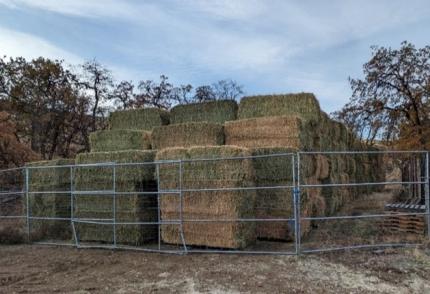

Oak Creek Wildlife Area Elk Fence Maintenance: Oak Creek Wildlife Area Natural Resource Technicians Boggs and Stoltenow fabricated new vehicle and walk through elk fence gates. New gates will be used for the new elk fence that will be constructed in the spring of 2024 and for repair of existing damaged gates.

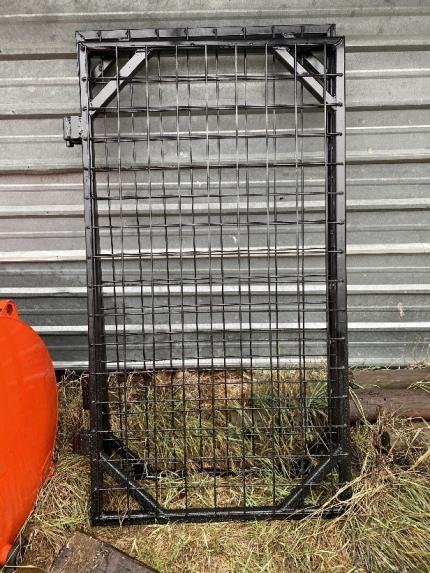
L.T. Murray Elk Feeding: The L.T. Murray Wildlife Area began feeding elk as they made their way out of the high country. There were around 100 elk hanging around the Robinson and Joe Watt feed sites a week ago, but the numbers have shot up to around 800 head.
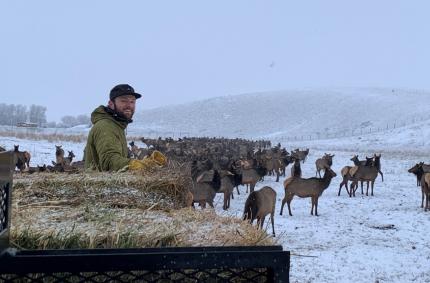
L.T. Murray Taneum Canyon Elk Fence: L.T. Murray Wildlife Area Assistant Manager Winegeart worked on fortifying a brace-point on an elk fence in Taneum Canyon. The L.T. Murray crew will add wire to some sections of this fence that elk have been jumping over the last few months.
Providing Recreation Opportunities
Sunnyside Haystack Wetland: The North Haystack Wetland in the Sunnyside-Snake River Wildlife Area is now completely reflooded, providing additional habitat for migratory waterfowl as well as increased opportunity for waterfowl hunters. The existing hunting blind on the Haystack Wetland is ADA accessible.
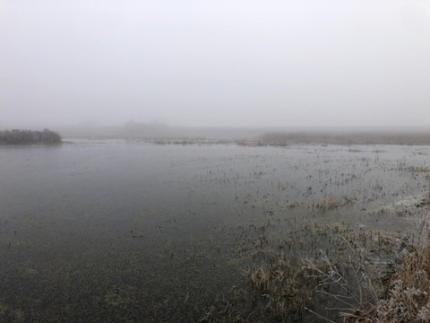

Wenas Wildlife Area Trail Counter Data Collection: Lands and Recreation Specialist Frame collected multiple trail counters from different trails spread throughout the Wenas Wildlife Area. These pieces of equipment are used to see how many users are on the landscape and how often. These counters were deployed for an 8-month time period and were redeployed after the data was collected.
Providing Conflict Prevention and Education
Rattlesnake Hills Elk: District 4 Wildlife Conflict Specialist Hand monitored elk activity on Rattlesnake Mountain including the Hanford Monument and surrounding private lands. No elk have been observed off the National Monument, but a few small groups of mostly bull elk were located within half a mile from the border. Three large groups of 200-300 elk were observed on lower elevations in the Snively Basin area.
Kahlotus Deer Damage: District 4 Wildlife Conflict Specialist Hand continued working with a new deer damage complaint from a wheat producer in the Kahlotus area. He gave the producer information about hazing strategies, damage permit hunting, and possible youth hunting opportunities. Two youth from the Region 3 special permit pool were deployed to another wheat farm near Lower Monumental Dam for hazing and lethal removal.
Kahlotus Injured Deer: District 4 Wildlife Conflict Specialist Hand and Sunnyside-Snake River Wildlife Area Manager Kaelber responded to an injured deer call in the town of Kahlotus. The deer involved in a vehicle collision and was euthanized and removed from the area.
Conserving Natural Landscapes
Wenas Miracle Mile Acquisition: Wenas Wildlife Area Manager Hughes and Regional Lands Agent Carbary met with a landowner in the Wenas Valley who is interested in conserving their property. The landowner is currently deciding how they are going to conserve the property with possibilities of a conservation easement and a life estate.
The total area being considered for conservation is 440 acres. The habitat consists of shrubsteppe and includes a riparian section of Wenas Creek. Hughes and Carbary answered questions for the landowner regarding a life estate, conservation easement, funding sources, and more. Hughes will be working with the two other colleagues to apply for a Recreation and Conservation Office Washington Wildlife and Recreation Program Grant this year as a potential funding source.
L.T. Murray Wildlife Area Seeding: L.T. Murray Wildlife Area Assistant Manager Winegeart broadcast seeded the Taneum Canyon six and half acre Ragland field with a native grass mix. Winegeart had borrowed a midsized Truax seed drill from Department of Transportation to do the job but a recent cultural survey restricted ground disturbance making using a seed drill not an option.
Providing Education and Outreach
Oak Creek Wildlife Area – Tim's Pond Interpretive Trail: Oak Creek Wildlife Area Technician Boggs continues to work on mounting signage for the new Tim’s Pond Interpretive Trail. Metal signs were fabricated by Naches Valley High School students and identify native vegetation.

Oak Creek Wildlife Area Winter Feeding Brochures: Oak Creek Wildlife Area Assistant Manager Charlet worked with the Washington Department of Fish and Wildlife Communications and Public Engagement (CAPE) Division to update and produce an informational brochure. This brochure outlines basic information about the elk and bighorn sheep winter feeding program, public viewing opportunities, and elk and bighorn sheep facts.
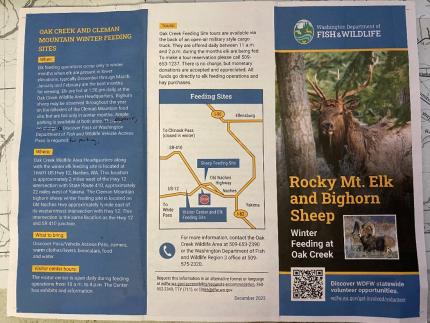
Other
Sunnyside-Snake River Wetland Maintenance: Sunnyside-Snake River Wildlife Area staff members continue to maintain access sites, monitor wildlife area waterways and wetlands, and clear debris when necessary.
Private Lands Website: Region 3 Private Lands Biologist Manderbach has been working with Private Lands biologists from other regions to improve the verbiage on the Private Lands website for Region 3. The website will soon be updated with new wording that should help clear up rules and access questions based on the calls and emails they receive, as well as common enforcement issues at private lands sites.
Horse Heaven Hills Pronghorn: Region 3 Private Lands Biologist Manderbach recently came across a herd of 39 pronghorn in the Horse Heaven Hills. The information was entered into the incidental wildlife observations page in Survey123.

Managing Wildlife Populations
Midwinter Aerial Seabird Surveys: Regional and Waterfowl Section biologists took to the skies to continue the long-term monitoring effort to document the abundance, trends, and distribution of marine birds and mammals in the Puget Sound and Strait of Juan de Fuca. The team has made good use of the weather and are on track to complete surveys by the end of January. Check out the survey data!
